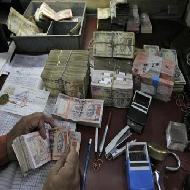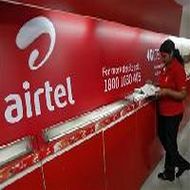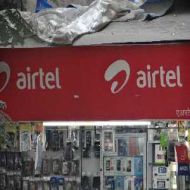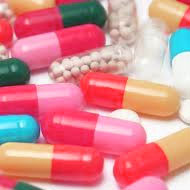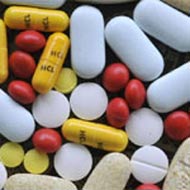HDFC Bank has been on a branch expansion spree in semi-urban and rural places over the last couple of years, outpacing rivals, as it hopes to reap rich dividends from the wealth creation in these centres when economic growth picks up in the coming years.
"Looking at the next 5-10 years, we do believe that if you are going to have a 6-8 percent GDP growth, you are bound to have trickle down effect of that into more and more semi-urban and rural locations," Paresh Sukthankar, Executive Director, HDFC Bank said in an interview to moneycontrol.com.
HDFC Bank shares outperformed those of peers by a wide margin for a long time after the market meltdown in 2008 triggered by the global financial crisis. But the law of averages finally seems to be catching up, as investors fret about valuations. Over the last one year, the stock has risen about 27 percent while rival private sector players like ICICI Bank, Axis Bank, Yes Bank, IndusInd Bank and Kotak Mahindra have gained between 30-52 percent.
Analysts say HDFC Bank's fundamentals remain sound, but current prices are fully reflecting the positives.
Sukthankar is confident that his bank will continue to grow faster than the industry average, but cautions that the rate of growth be a function of how the economy does.
Responding to criticism that HDFC Bank has managed to protect its asset quality by shying away from long term loans to capital intensive sectors, Sukthankar said the bank's portfolio only reflects the key drivers of the economy.
"As the investment cycle picks up again, between our own balance sheet and our investment banking capabilities, we will be happy to participate what we believe are bankable projects with the sponsors that we are comfortable with," Sukthankar said.
Edited excerpts of the interview:
Q: Your bank has been consistently outperforming rivals in terms of earnings growth and asset quality, even in a difficult operating environment. What is the secret sauce?
A: If there was a simple recipe to this I am sure it would have got replicated. There is no one secret or couple of specific issues. One of the key contributors to this relatively more stable performance has been the diversification of our businesses. If you look at it from a lending point of view or an asset point of view, our business is almost half and half between wholesale and retail. I think that is important because if you look at the last 10 or 15 years that you are talking about, for almost 7-8 years till 2-3 years back, retail was the mantra. Then you went through a phase where post 2008-2009, when a lot of retail portfolios gave trouble for a number of banks—both domestic and foreign—and as a result retail became outcast of sorts and people were not looking to grow their retail books.
That was the time when capex cycle, infrastructure and new projects and so on were pretty much the key drivers of loan growth for the banking system. That happened for about four years or so. Again now in the last year or so because there have been some apprehensions about what is happening on the infrastructure side, on the capex cycle and the policy environment and so on. Clearly once again banks are re-focusing on retail.
In the last few years, in those 2-3 years when retail at an industry level came down, our retail was growing a little slower than 20 percent, but corporate was growing at about 25 percent. So, again we maintained our growth rates.
The point is that even in years or during periods when of one of the businesses is looking significantly more attractive than the other, we continue to invest in and grow the other business, although rates of growth may vary.
If you then look at the other reason why banks go through volatility in businesses and earnings, it is because of what happens on the funding side. We are essentially a deposit funded bank. We are not dependent on wholesale borrowings or foreign currency bonds and stuff like that. Within deposits again there is high proportion of retail—current and savings accounts(CASA)—which provides certain stability to the funding patterns. So we are a little less vulnerable to the volatility in interest rates than perhaps those who are more dependent on wholesale (bulk) deposits or wholesale borrowings. That again then gives us certain stability to our margins.
Besides, we have been growing our distribution network; so we are gaining market share.
Q: The rate of deposit growth has been slackening, making it difficult for banks to cut lending rates. Do you see this trend changing anytime soon?
A: Deposit growth has been sort of sluggish at a system level and it has certainly been slower and lagging loan growth. So, if you look at the last numbers which came out, you had deposit growth still at a system level at 13 percent or little less than that and loan growth was around 15-16 percent. So, there is some concern that deposit growth is not keeping pace with loan growth.
While we all have cut some interest rates and so on, for this to continue you certainly need a further reduction in the liquidity deficit which is there in the banking system which means either deposit growth picks up or you have further CRR cuts or some further liquidity which comes in through the OMO (open market operations) or other route and reduces the LAF (liquidity adjustment factor) borrowings to perhaps closer to Rs 30000-40000 crore (from around Rs 1 lakh crore at present). Then banks will say: okay at these rates we have got enough deposits, why not drop deposit rates. Because the only way you can drop your base rate on the lending side is if your deposit rates come down.
As far as we are concerned, our deposit growth has been certainly healthier than the system deposit growth. But even then, if you look at our deposit growth, it was around 22 percent as of December. So, we were clearly higher than the overall system, marginally slower than our loan growth which was around 24 percent. There was marginal difference of course, but we also had some tier-II capital and so on. So, we were more than comfortably funded. While both our loan growth and our deposit growth are ahead of the system so to that extent we have been able to source enough deposits, the fact is that at a system level if you need to see the transmission of lower rates on a continued basis, you would have to see further easing of liquidity. If there is not enough of deposit flows into the system at these interest rates then at lower interest rates there would be that much of a lower attractiveness of the retail deposit or of the saver to put money into bank deposits.
Q: You have opened around 1000 branches in the last two years, compared to an average of 300-400 by your rivals. Why the emphasis on the brick and mortar model?
A: We have also traditionally done an average of somewhere around 300-350 branches. In the last couple of years we clearly stepped up. A large part of this increased or an enhanced growth rate in distribution has been our focus on the semi-urban and rural markets. A good 70-80 percent of these new branches would be in new locations, in new cities which we were not in previously.
That also positions us better in terms of our priority sector lending (PSL) requirements, and whatever financial inclusion targets that we have.
We clearly believe that there is a reasonably large relatively under penetrated market in the semi-urban and rural areas. You must remember that these markets are intrinsically smaller, but collectively it will certainly make a difference.
If you look at it from a slightly more strategic point of view, today it has got a certain potential, but if you look at the next five, ten years then we do believe that if you are going to have a 6-8 percent GDP growth, you are bound to have trickle down effect of that into more and more semi-urban and rural locations. Equally from the other side when you look at better price realisations from an agriculture point of view, when you look at the government focus in terms of better supply chains, better developmental activities which are again rural based, you are going to see also greater income generation, wealth creation and the need for basic banking services which are currently not available there.
All of these things (opening more branches) cost us and we have seen some deterioration in our cost to income ratio as a result of that. But that is something we are willing to live with because we believe it is an investment which will hold us in good stead in future.



